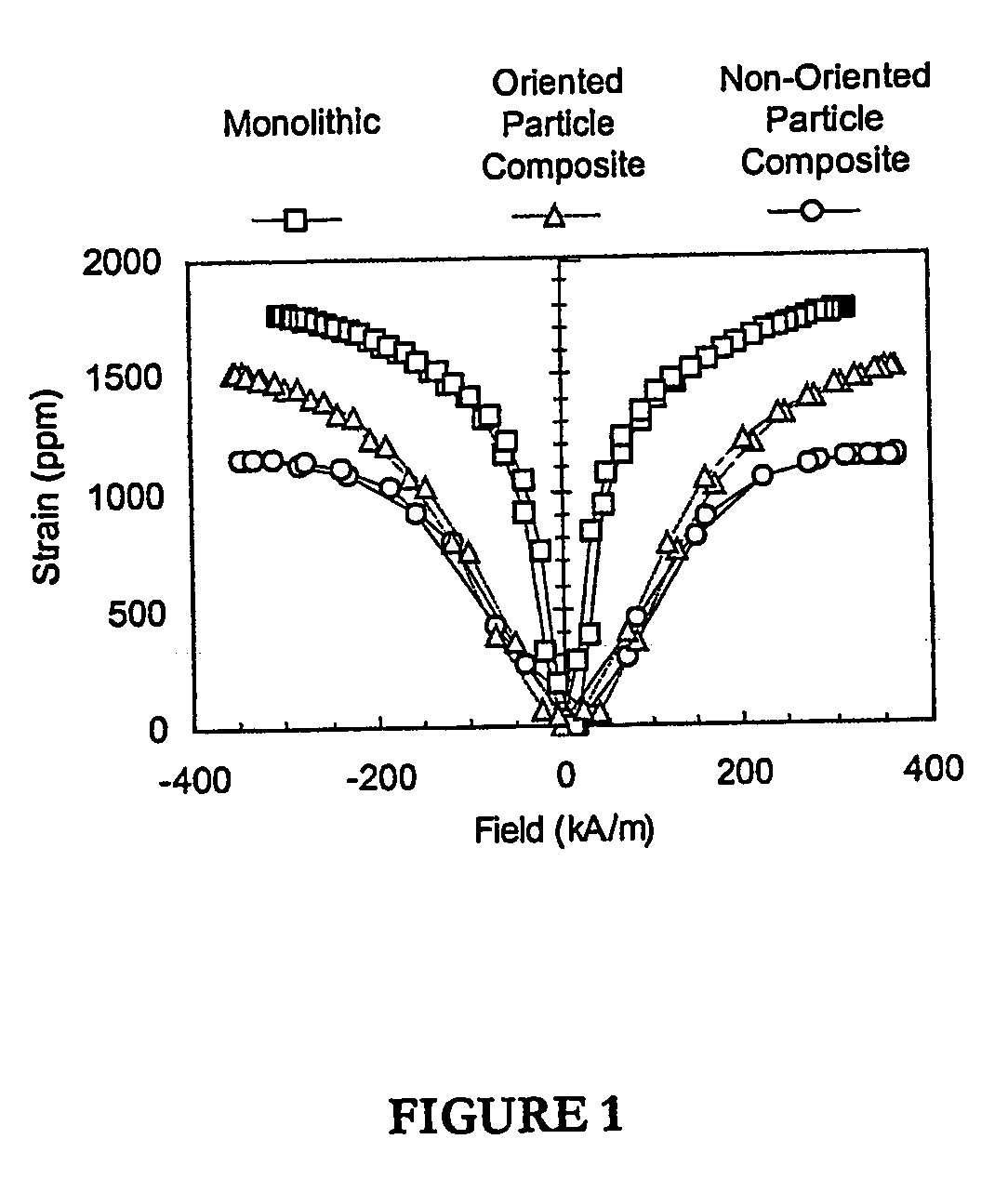Directionally oriented particle composites
a composite material and directional orientation technology, applied in the field of particle-based composite materials, can solve the problems of crystallographic orientation of particles, low saturation strain output of composite systems, and high cost of sonar transducers, and achieve the effects of reducing operating fields, improving the properties of particulate composite forms, and increasing saturation strain
- Summary
- Abstract
- Description
- Claims
- Application Information
AI Technical Summary
Benefits of technology
Problems solved by technology
Method used
Image
Examples
example 1
Illustrative Example 1
A. Protocols
[0061] Two different types of composites (oriented and non-oriented) were manufactured for this example. The composites, along with a monolithic [112] Terfenol-D sample, were tested under combined magneto-mechanical loading at constant ambient temperature. Data recorded include load, strain, flux, and magnetic field. The research focus was to understand the role of crystallographic orientation on the magnetostriction in composite materials. In the following paragraphs, the fabrication and testing approach is described in detail.
[0062] In this example, particle crystal orientation along crystal direction was accomplished with particle shape anisotropy. Thus it was necessary to produce particle shapes that provided orientation along the desired crystallographic direction. For Terfenol-D this direction corresponds to the direction of maximum magnetostriction or the [111]. However, commercially available material is only produced with the orientation...
example 2
Illustrative Example 2
[0077] Skilled artisans will note a certain amount of overlap between the disclosure information that is provided in Example 1 and Example 2.
A. Protocols
[0078] As in Example 1 above, in this Example, two different types of composites (oriented and non-oriented) were manufactured for this study. The composites, along with a monolithic [112] Terfenol-D sample, were tested under combined magneto-mechanical loading at constant ambient temperature. Data recorded include load, strain, flux, and magnetic field. In the following paragraphs, the fabrication and testing approach is described in detail.
[0079] In this study, particle orientation along a specific crystal orientation was accomplished using particle shape anisotropy. Thus needle shaped particles with the longest axis along a direction of high magnetostriction were necessary. In Terfenol-D the maximum magnetostriction orientation is the [111]. However, commercially available material is only produced with ...
PUM
| Property | Measurement | Unit |
|---|---|---|
| frequency | aaaaa | aaaaa |
| frequency | aaaaa | aaaaa |
| frequency response | aaaaa | aaaaa |
Abstract
Description
Claims
Application Information
 Login to View More
Login to View More - R&D
- Intellectual Property
- Life Sciences
- Materials
- Tech Scout
- Unparalleled Data Quality
- Higher Quality Content
- 60% Fewer Hallucinations
Browse by: Latest US Patents, China's latest patents, Technical Efficacy Thesaurus, Application Domain, Technology Topic, Popular Technical Reports.
© 2025 PatSnap. All rights reserved.Legal|Privacy policy|Modern Slavery Act Transparency Statement|Sitemap|About US| Contact US: help@patsnap.com



